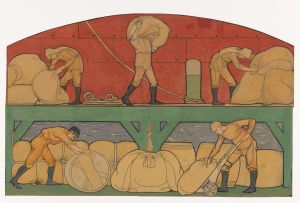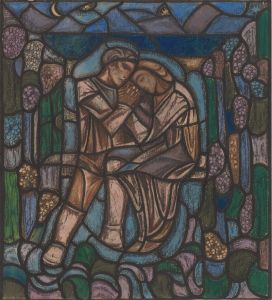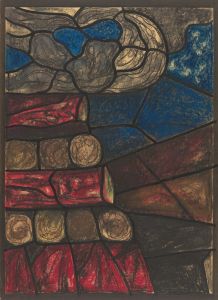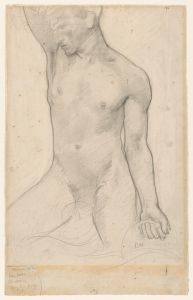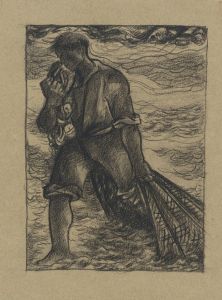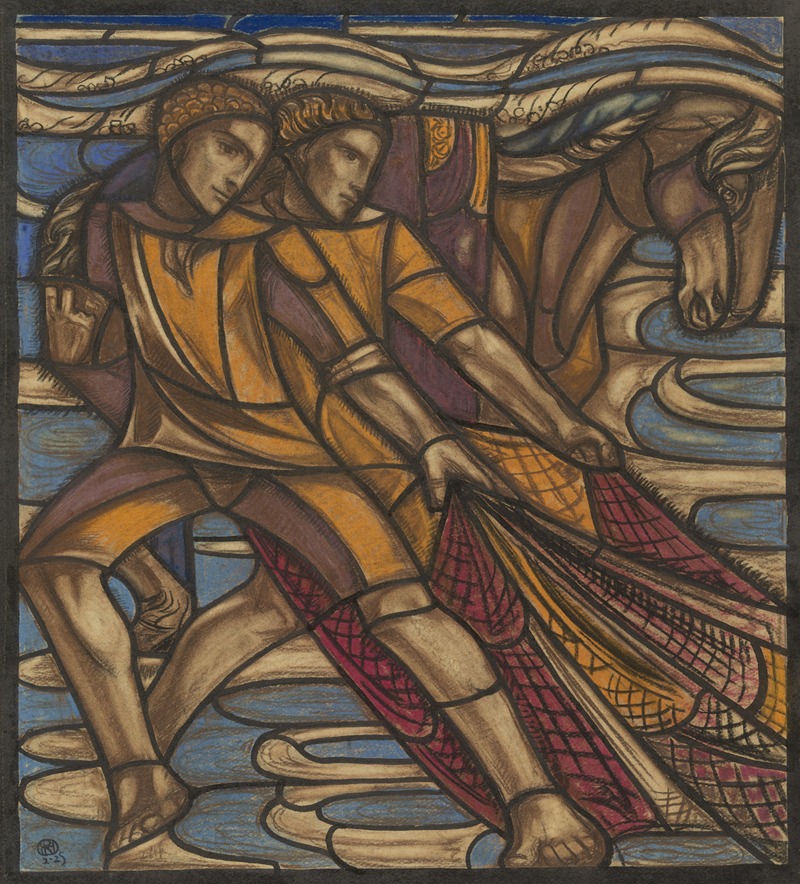
Ontwerp voor raam in het Nederlands Paviljoen op de tentoonstelling Arts Décoratifs te Parijs, 1925
A hand-painted replica of Richard Nicolaüs Roland Holst’s masterpiece Ontwerp voor raam in het Nederlands Paviljoen op de tentoonstelling Arts Décoratifs te Parijs, 1925, meticulously crafted by professional artists to capture the true essence of the original. Each piece is created with museum-quality canvas and rare mineral pigments, carefully painted by experienced artists with delicate brushstrokes and rich, layered colors to perfectly recreate the texture of the original artwork. Unlike machine-printed reproductions, this hand-painted version brings the painting to life, infused with the artist’s emotions and skill in every stroke. Whether for personal collection or home decoration, it instantly elevates the artistic atmosphere of any space.
Richard Nicolaüs Roland Holst was a prominent Dutch artist known for his contributions to the Arts and Crafts movement in the Netherlands. One of his notable works is the "Ontwerp voor raam in het Nederlands Paviljoen op de tentoonstelling Arts Décoratifs te Parijs, 1925," which translates to "Design for a Window in the Dutch Pavilion at the Decorative Arts Exhibition in Paris, 1925." This work was created for the Exposition Internationale des Arts Décoratifs et Industriels Modernes, held in Paris in 1925, an event that was instrumental in defining the Art Deco style.
Roland Holst was born on December 4, 1868, in Amsterdam, into a family with strong artistic and literary connections. He studied at the Rijksakademie van Beeldende Kunsten in Amsterdam, where he was influenced by the prevailing artistic movements of the time, including Symbolism and the Arts and Crafts movement. His work often reflected a synthesis of these styles, characterized by a strong sense of design and an emphasis on craftsmanship.
The 1925 Paris Exhibition was a significant event that showcased the latest trends in decorative arts and architecture. It was at this exhibition that the term "Art Deco" was popularized, describing a style that combined modernist styles with fine craftsmanship and rich materials. The Dutch Pavilion, where Roland Holst's window design was featured, was part of a broader effort by the Netherlands to present its cultural and artistic achievements on an international stage.
Roland Holst's design for the window in the Dutch Pavilion exemplifies his mastery of integrating art with architecture. His work often included stained glass, a medium that allowed him to explore the interplay of light and color. The design for the window would have been characterized by intricate patterns and possibly symbolic imagery, reflecting his background in Symbolism and his interest in conveying deeper meanings through art.
The window design would have been intended not only as a decorative element but also as a statement of Dutch artistic identity. During this period, the Netherlands was keen to assert its cultural presence internationally, and artists like Roland Holst played a crucial role in this endeavor. His work would have been seen as a reflection of the Dutch commitment to quality and innovation in the arts.
Roland Holst's contributions to the arts extended beyond his work as a visual artist. He was also a writer and a teacher, influencing a generation of artists through his teachings and writings. His involvement in various artistic movements and his commitment to integrating art into everyday life were central to his philosophy.
In summary, Richard Nicolaüs Roland Holst's "Design for a Window in the Dutch Pavilion at the Decorative Arts Exhibition in Paris, 1925" is a testament to his skill and vision as an artist. It reflects the broader trends of the Art Deco movement and the specific cultural aspirations of the Netherlands during the early 20th century. His work remains an important part of Dutch art history, illustrating the country's rich tradition of craftsmanship and artistic innovation.





